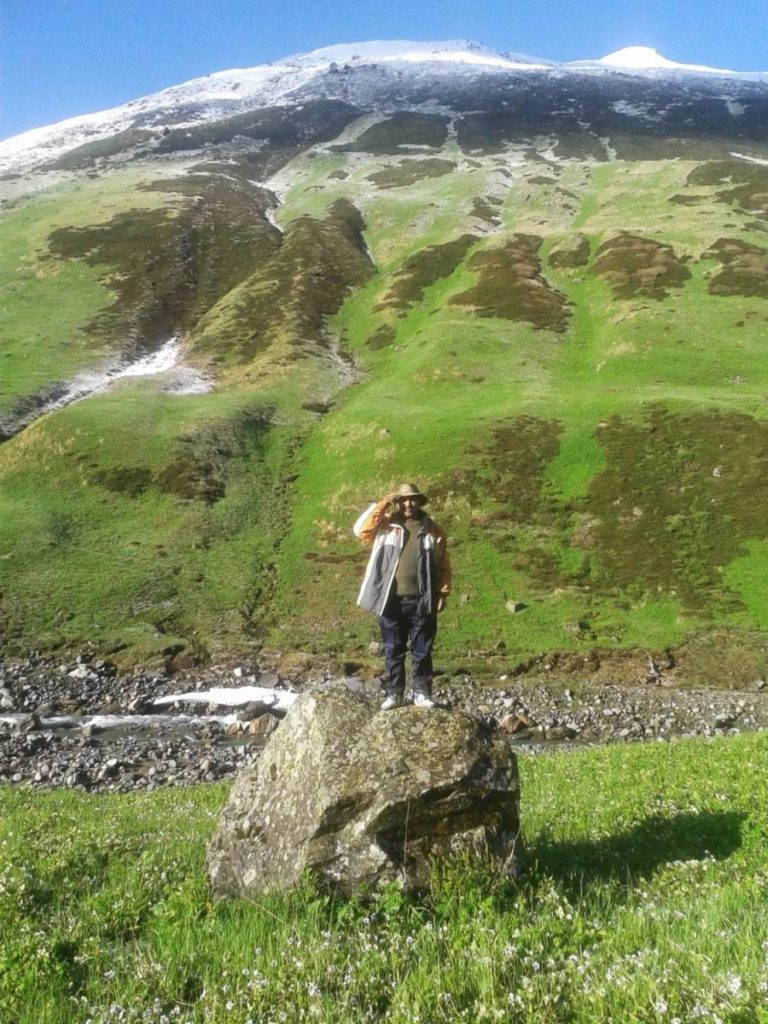According to Chaudhary, the other threats to the park include agriculture, traditional grazing and hydropower development…reports VISHAL GULATI
Like other park rangers, Roshan Chaudhary normally leaves for patrolling in the morning and returns at sunset. And when there is a tip-off on the movement of poachers for several nights at a stretch he has to camp for the conservation of Western Himalayan biodiversity.
His job as a Deputy Ranger was to protect the highly endangered species, ranging from the elusive endangered pheasant western tragopan to the musk deer and the Himalayan tahr in the Great Himalayan National Park, a Unesco World Heritage site in the north-west Himalayas, besides a host of native avifauna and mammals species and a large number of medicinal plants.
Park authorities fear for their vulnerability from poaching from localised settlements in the buffer zone known as an eco-zone.
This national park in the northern state of Himachal Pradesh, ranked as the best-managed protected area in the country by the Ministry of Environment, Forest and Climate Change in 2021, is characterized by high alpine peaks, alpine meadows and riverine forests with minimal tourism impact.
The 90,540 ha property includes the upper mountain glacial and snow meltwater sources of several rivers, and the catchments of water supplies that are vital to millions of downstream users.
“Human settlements pose the greatest threat to park fauna and flora species, besides illicit felling,” Chaudhary, the longest-serving official who retired on December 31 after serving the park in various capacities for 33 years, told.
According to Chaudhary, the other threats to the park include agriculture, traditional grazing and hydropower development.
He said most of the trekking routes are closely regulated by camera trapping devices.
Locals often venture into forests in groups to collect the expensive herbs. They stay for weeks to collect them.
“They are posing a serious challenge as they are familiar with the local typography and even sturdy compared to outside poachers,” Chaudhary, who trekked the rugged and inaccessibility park known for its significant size of 1,171 sq km on several occasions and separated from home and family for weeks or even months, told IANS in an interview on Monday.
The park’s eco-zone has some 160 villages and hamlets, while the boundaries are connected to the Pin Valley National Park, the Rupi-Bhawa Wildlife Sanctuary and the Kanawar Wildlife Sanctuary.
Park authorities normally involve locals in conservation of biodiversity at the park. Besides protecting it from the poachers, they are playing an important role for managing sustainable eco-sensitive or nature-based eco-tourism.
The effective conservation management of habitat and endangered species is really a challenge for park authorities.
“After a daylong strenuous trek over scree, boulders, and very narrow paths into high alpine meadows, the park offers fantastic places for stargazing — allowing you to gaze the night sky like never before,” he said, adding “That is the most relaxing moment in one’s life.”
Regarding his favourite and the most challenging trek in the park, Chaudhary, who joined the park as a forest guard, said it is Shupakuni Pass between two wildlife ranges — Tirthan and Sainj. Normally it takes six-seven days to cover the trek.
Starting at an altitude of 1,700 metres, the highest peak within the Himalayan park approaches 5,800 metres.
The park, which is totally untouched by a road network, has four valleys — Tirthan, Sainj, Jiwa Nal and Parvati.
According to Chaudhary, the Himalayan park holds religious significance as it is home several high-altitude Jognis, meaning prayer sites. During summer, the local deity and villagers visit these places.
The Great Himalayan National Park, notified in 1999, is home to 209 bird species, including the western tragopan, the Himalayan monal, the koklas, the white-crested kalij and the cheer, all pheasant species.
One of the richest biodiversity sites in the western Himalayas, the park supports the snow leopard, the Tibetan wolf, the Himalayan brown and black bear, the Himalayan blue sheep, the Asiatic ibex, the red fox, the weasel and the yellow-throated marten.
The small mammals include the grey shrew, a small mouse-like mammal with a long snout, royal mountain vole, Indian pika, giant Indian flying squirrel, porcupine and the Himalayan palm civet, besides nine amphibians and 125 insects.

Talking about the man-animal conflict, Chaudhary, who is wild at heart, told that animals in the wild mostly avoid any encounters with the humans — and when they do attack people, it is usually in self-defence.
He said the snow leopard also needs protection from pastoral communities in alpine pastures.
“The park supports a good population of the snow leopard with a sizable population of its prey species like the Asiatic ibex and the Himalayan blue sheep,” said Chaudhary, who had face-to-face encounters with the common leopard and the brown bear several times.
“The wild animals rarely attack humans. They attack only when the people disturb them. I have spent nights in their habitat with just a rucksack carrying a raincoat, cap, sleeping bag and an LED torch and they just passed my rucksack without bothering me.”
“Man-animal conflicts are more a social issue. For the conservation of the wildlife, you need cooperation of the local communities,” he added.
Chaudhary advocated the need to link eco-tourism with the local communities. “If we fail to create awareness on wildlife, we will fail to preserve them for the future generations,” he added.
ALSO READ-Book on ‘racial relation between Indians and invaders’
